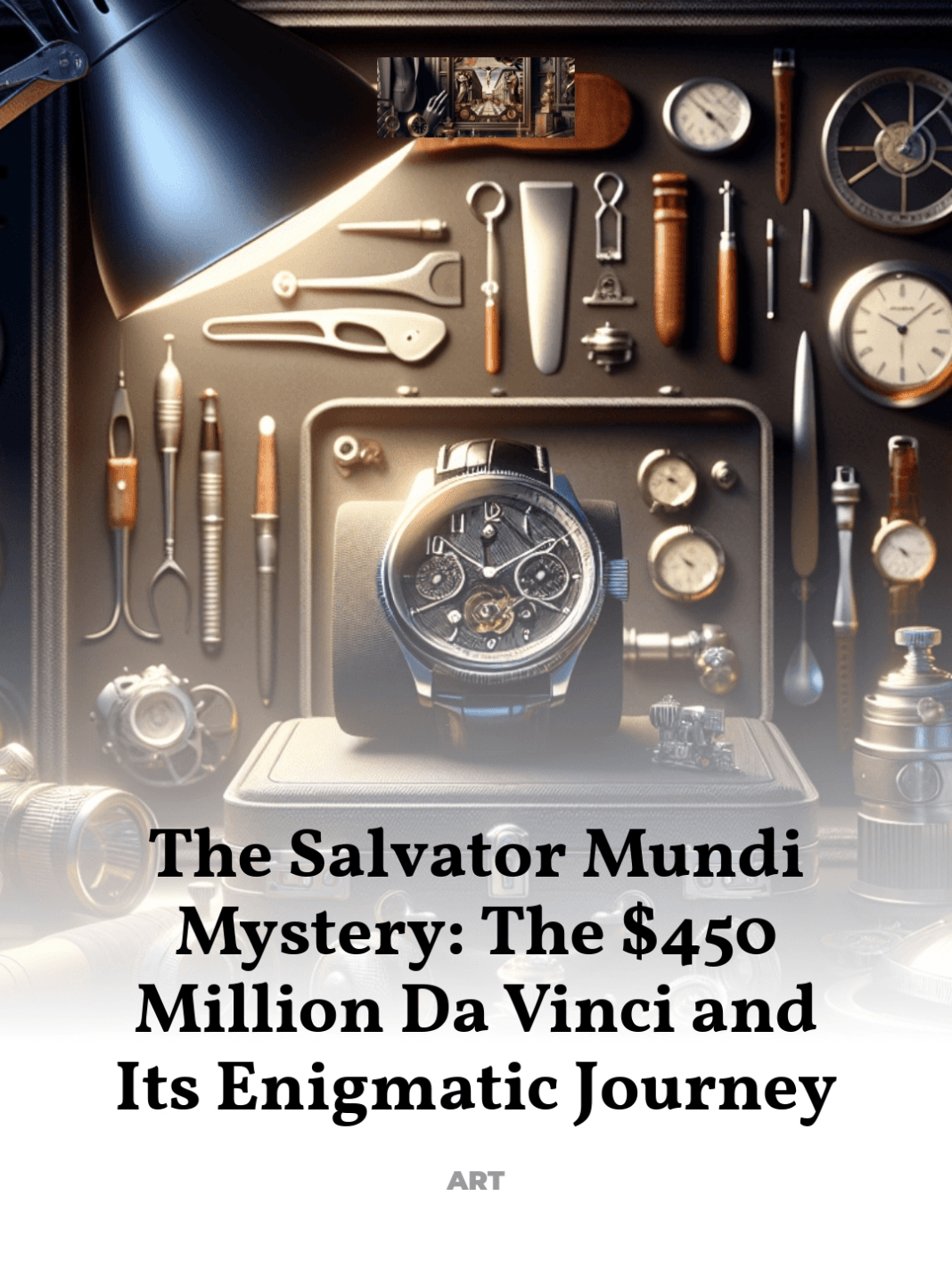How a lost Renaissance painting became the most expensive artwork ever sold.
The tale of Leonardo da Vinci’s Salvator Mundi is as enigmatic as it is captivating, weaving through centuries of art history and emerging as the most expensive painting ever sold.
- Rediscovery of a Masterpiece: The Salvator Mundi’s Astonishing Comeback
- Debates on Authenticity: The Art World’s Dilemma
- A Journey Through Ownership: From Kings to Tycoons
- Cultural and Artistic Significance: Beyond the Price Tag
- The Future of Salvator Mundi: Conservation and Legacy
Rediscovery of a Masterpiece: The Salvator Mundi’s Astonishing Comeback
In 2005, a remarkable event occurred in the art world when a painting bought for less than $10,000 at an estate sale in the United States was identified as a lost original by Leonardo da Vinci. This painting, known as Salvator Mundi, or ‘Savior of the World,’ depicts Christ with his right hand raised in blessing and his left holding a crystal orb. The artwork’s journey from obscurity to fame is a testament to the enduring allure of Renaissance art and the genius of da Vinci.
The painting’s authentication process involved an intense examination by a consortium of art historians, including experts from the National Gallery in London. Their analysis focused on the painting’s technique and style, comparisons with other da Vinci works, and scientific tests on the materials used. The conclusion that it was indeed an authentic da Vinci catapulted Salvator Mundi into the global spotlight.
- Technological Insights: Advanced imaging technologies revealed underdrawings and changes characteristic of da Vinci’s work process.
- Historical Documentation: References to the painting in historical records aligned with the artwork’s characteristics.
- Artistic Techniques: The painting’s composition and execution bear unmistakable signs of da Vinci’s hand.
Debates on Authenticity: The Art World’s Dilemma
Despite the expert consensus, the authenticity of Salvator Mundi has been a subject of intense debate within the art community. Some scholars argue that the painting was produced by da Vinci’s workshop under his supervision, rather than by the master himself. This controversy stems from variations in technique and quality observed in the painting compared to other known da Vinci works.
Experts like Martin Kemp, a renowned da Vinci scholar, assert the painting’s authenticity based on its stylistic elements and historical consistency. However, others, such as art historian Frank Zöllner, express reservations, pointing to the painting’s uneven execution as indicative of workshop involvement.
- Provenance Uncertainties: Gaps in the painting’s historical record fuel debates over its origins.
- Technical Analysis: Discrepancies in technique and material composition raise questions about its attribution.
- Expert Opinions: The art community remains divided, with reputable voices on both sides of the argument.
A Journey Through Ownership: From Kings to Tycoons
The provenance of Salvator Mundi is as fascinating as its attribution. Believed to have been commissioned around 1500, the painting was first recorded in the collection of King Charles I of England in the 17th century. After changing hands several times, it disappeared until it was acquired at an American estate sale, misattributed and undervalued.
Following its rediscovery and subsequent authentication, the painting was sold for $450 million at a Christie’s auction in 2017 to Saudi Arabian prince Badr bin Abdullah, acting on behalf of Saudi Arabia’s crown prince Mohammed bin Salman. This sale set a new record for the most expensive artwork ever sold, highlighting the immense cultural and monetary value placed on Renaissance art.
- Royal Collections: The painting’s association with European monarchs adds to its historical allure.
- Modern Magnates: Ownership by contemporary elites reflects the status symbol of owning such a masterpiece.
- Auction Drama: The record-breaking sale at Christie’s underscores the high stakes involved in art auctions.
Cultural and Artistic Significance: Beyond the Price Tag
The cultural and artistic significance of Salvator Mundi transcends its monetary value. As a work by Leonardo da Vinci, it offers insights into the Renaissance period’s artistic innovations and cultural contexts. The painting embodies themes of spirituality and redemption, central to Christian iconography, rendered with the technical mastery for which da Vinci is renowned.
Moreover, the global fascination with the painting highlights the enduring appeal of Renaissance art and its influence on contemporary culture. It serves as a bridge between past and present, inviting reflection on the ways in which art shapes and reflects human experience.
- Renaissance Artistry: The painting exemplifies the innovative techniques and humanistic themes of the Renaissance.
- Spiritual Symbolism: Salvator Mundi’s depiction of Christ has deep religious and cultural resonance.
- Public Engagement: The painting’s journey encourages public discourse on art history, conservation, and ethics.
The Future of Salvator Mundi: Conservation and Legacy
The future of Salvator Mundi is closely tied to its conservation and the legacy it leaves for future generations. As it resides in the collection of the Louvre Abu Dhabi, efforts to preserve the painting are paramount, ensuring that it continues to inspire and educate. The painting’s visibility and accessibility are crucial in sparking interest in art history and conservation efforts worldwide.
Furthermore, Salvator Mundi’s story offers valuable lessons on the complexities of art authentication, the importance of provenance, and the cultural significance of art in society. As it continues to captivate the public imagination, Salvator Mundi remains a symbol of artistic mystery and unparalleled craftsmanship.
- Conservation Challenges: Maintaining the painting’s condition requires advanced techniques and constant vigilance.
- Educational Potential: Salvator Mundi serves as a focal point for discussions on art history and conservation.
- Legacy: The painting’s record-breaking sale and controversial journey contribute to its legacy as a cultural icon.
For further exploration of Leonardo da Vinci’s works and their impact on art and culture, consider visiting authoritative sources such as the Louvre Museum’s official website.



